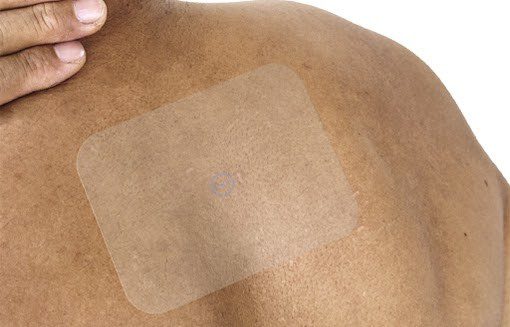
It’s not uncommon to feel the ‘winter blues’. A combination of shorter, darker days and wetter, colder weather makes you less likely to do the things that are proven to reduce stress and raise happiness levels: namely, exercise, walks in nature and getting the sunshine your body needs to function healthily.
For some people, however, the depression they experience when the seasons change is more than just feeling a bit blue. Seasonal Affective Disorder (SAD) is a real and serious form of depression.
According to the Royal College of Psychiatrists:
- Approximately 3 in every 100 people have significant winter depression
- SAD is 3 times more likely to affect women than men, especially those of a childbearing age
- A third of people with SAD feel better in the spring and summer
What causes SAD?
The exact cause of SAD is still unknown. Some experts theorise that our circadian rhythm can be disrupted when the seasons change, causing changes in energy levels. Others suggest that the hormones that regulate mood and sleep – melatonin, which is triggered by darkness, and serotonin, which is triggered by sunlight – can be disturbed by seasonal changes.
SAD Symptoms
Symptoms for this type of depression can vary from person to person and from season to season, but here is a list of the most common ways in which you may be affected:
- Feelings of sadness, despair or guilt
- Sleep issues, which can include difficulty falling and/or staying asleep, as well as difficulties waking up or sleeping more than usual
- Having a lack of energy and difficulty concentrating
- Changes in appetite, such as feeling hungrier and snacking more
- Not wanting to see people and losing interest in physical contact, including sex
- Becoming vulnerable to other health conditions such as infections or colds
- Suicidal feelings
Source: Mind UK
If any of these symptoms start to upset your everyday life, there are a number of ways in which you can take action.
Treatments for SAD
We have rounded up five of the most accessible ways to manage Seasonal Affective Disorder.
1) Get as much natural light as possible
Serotonin is a chemical in the body that stabilises mood, and having low levels of it has been linked to depression. It is thought that exposure to sunlight triggers the release of serotonin in the brain – hence the old adage that sunshine is good for you. It is also the best natural source of vitamin D, which is vital for bone health.
A free and simple way to boost your serotonin and vitamin D levels is to go outside in the winter, especially in the first few hours after you wake up. Going for a walk can help in multiple other ways; exercise is known to improve mental health, and spending time in a natural environment is thought to reduce stress levels and depression. What better way, then, to reduce the symptoms of SAD?
Although this sounds easy, getting yourself out of a warm bed and into the cold air when you suffer from any type of depression can be a real challenge. If you find it difficult, try to set up and maintain a routine that ensures you get some exposure to natural light for around 30 minutes every day. If this doesn’t work for you, try to sit near a window that brings in natural light as much as possible.
2) Use a SAD lamp
If it’s not possible for you to go outside or if your symptoms continue to interfere with your life, you may want to consider light therapy. SAD lamps – also known as light boxes, seasonal depression lamps or SAD lights – replicate natural daylight, which helps the brain release serotonin. Before you buy a SAD lamp, take note of the following:
- Make sure that you are buying a light box that is designed to treat mood disorders; other lamps, such as those designed to treat skin conditions, will not work in the same way.
- A little trial and error is in order, but you will want to start by using the lamp for around 20 minutes every day. You can increase the length of session if you need more exposure.
- Make sure to position the lamp downwards so that it doesn’t cause eye glare.
3) Take a vitamin D supplement
It is still inconclusive whether a vitamin D deficiency can be directly linked to SAD. Regardless, in 2016, Public Health England recommended that everyone in the UK should consider vitamin D supplements in the winter months as we do not get the 10 micrograms per day that our bodies need to stay healthy. Taking a vitamin D supplement remains a common recommendation for those with seasonal depression.
To Better Days active patches contain a patented combination of vitamin D and dextrose, which are absorbed transdermally. They can be used along with other medications and are IBS-friendly, making them a practical vitamin D supplement for those who want to try an alternative to pills.

4) Consider your diet
When you are experiencing depression, your body will often crave foods such as sugar and starchy carbs. It is only too easy to grab a chocolatey snack or devour a whole bowl of cheesy pasta, only to be left with low blood sugar and a feeling of bloatedness that does nothing to improve your mood.
Eating a healthy and nutritious diet may be far down your list of priorities, but it is a key element of self-care for those with SAD. Get all the vitamins and minerals your body needs from leafy greens and bright vegetables, add in whole grains and legumes for starch and fibre, get your healthy fat fix from olive oil and nuts and fill up on protein-rich oily fish.
5) Get help if you feel you need it
Finally – and most importantly – if you are feeling overwhelmed by your SAD symptoms, know that you are not alone. Seeking help for a mental health problem can be daunting, but often it’s an important first step towards seeing an improvement in your mind and body.
If you’re not sure where to start when it comes to seeking help, take a look at Mind UK’s website or OutwitTrade for some useful advice and resources.
A healthcare professional – such as a GP, a therapist or a counsellor – may recommend a course of antidepressants or therapy sessions as treatment for seasonal depression.
What Works for You?
The right Seasonal Affective Disorder treatment will vary from person to person – these are just a few of the ways that you might be able to ease your symptoms. Do you have any personal tips for coping with SAD? Let us know in the comments.
To Better Days has a range of active patches that help those experiencing sustained discomfort. Our easy to use adhesive patches contain a patented combination of vitamin D and dextrose to offer a topical and targeted option that supports the health of joints, muscles and nerves.
Here’s to being on the move, having more ‘get up and go’ and a feeling of freedom. Here’s To Better Days.



